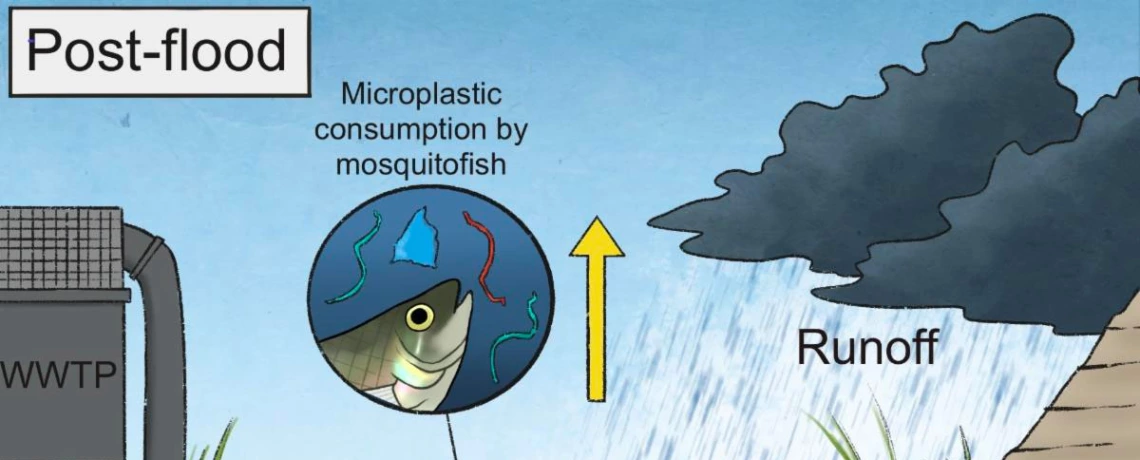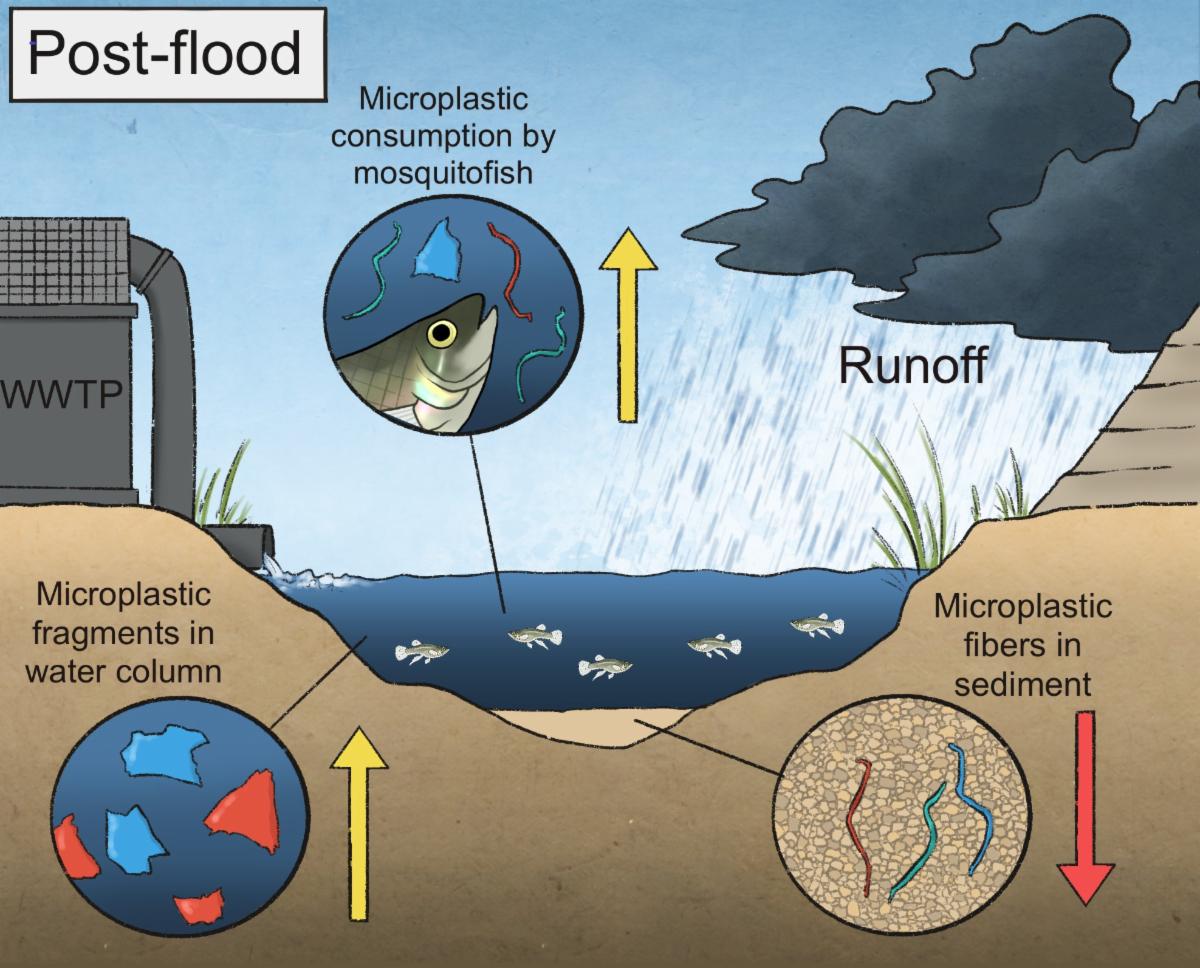Summary of Impacts of Baseflow and Flooding on Microplastic Pollution in an Effluent-Dependent Arid Land River in the USA
May 7, 2021
Image

 The WRRC is pleased to feature the following article summary, prepared by co-author, Drew Eppehimer, Arid Lands Resource Sciences PhD Candidate at the University of Arizona.
The WRRC is pleased to feature the following article summary, prepared by co-author, Drew Eppehimer, Arid Lands Resource Sciences PhD Candidate at the University of Arizona.Treated wastewater-supported rivers are common throughout the world. In arid and semi-arid environments, treated effluent is often the only source of perennial flow in these systems. Effluent discharge can create and maintain aquatic habitat, but there are challenges, including microplastic pollution. Microplastics are ubiquitous worldwide and include primary microplastics, like microbeads, and secondary microplastics, such as fragments, film, and fibers. Although modern wastewater treatment plants remove the vast majority, microplastics are still present in treated effluent.
This study examined microplastic pollution in the lower Santa Cruz River near Tucson, AZ, and was the first research on microplastics in an effluent-dependent river. We quantified microplastic concentrations in flowing water and in river sediment, as well as microplastic consumption by a small, predatory fish (Western Mosquitofish), at 10 sites across two time periods: baseflow and post-flood. During baseflow sampling, the river had been flowing as 100% treated effluent for over 100 days, and post-flood sampling took place within ~24 hours of the first large monsoon flood on the river.
In total, across both sampling periods, we detected microplastics in 95% of water samples, 99% of sediment samples, and 6% of Mosquitofish stomachs. Some additional key findings include:
- Microplastic fragment concentrations in the flowing water were higher post-flood
- Microplastic fiber concentrations in river sediment were lower post-flood
- Mosquitofish were more likely to have consumed microplastics post-flood than during baseflow
The concentrations and occurrences of these microplastics were strongly influenced by floods, which bring anthropogenic litter into rivers via runoff and wash out microplastics previously deposited in the sediment.
As natural surface waters become increasingly scarce, effluent-dependent rivers and streams will become more common and more valuable. Continued research is needed to better understand the benefits and unique challenges of effluent-supported aquatic ecosystems.
Eppehimer, D.E., Hamdhani, H., Hollien, K.D. et al. Impacts of baseflow and flooding on microplastic pollution in an effluent-dependent arid land river in the USA. Environ Sci Pollut Res (2021). https://doi.org/10.1007/s11356-021-13724-w
This research was supported, in part, by a WRRA Section 104(b) student research grant administered by the WRRC. Award PIs: Drew Eppehimer, David Quanrud, Michael Bogan
Graphic: Maya Stahl

